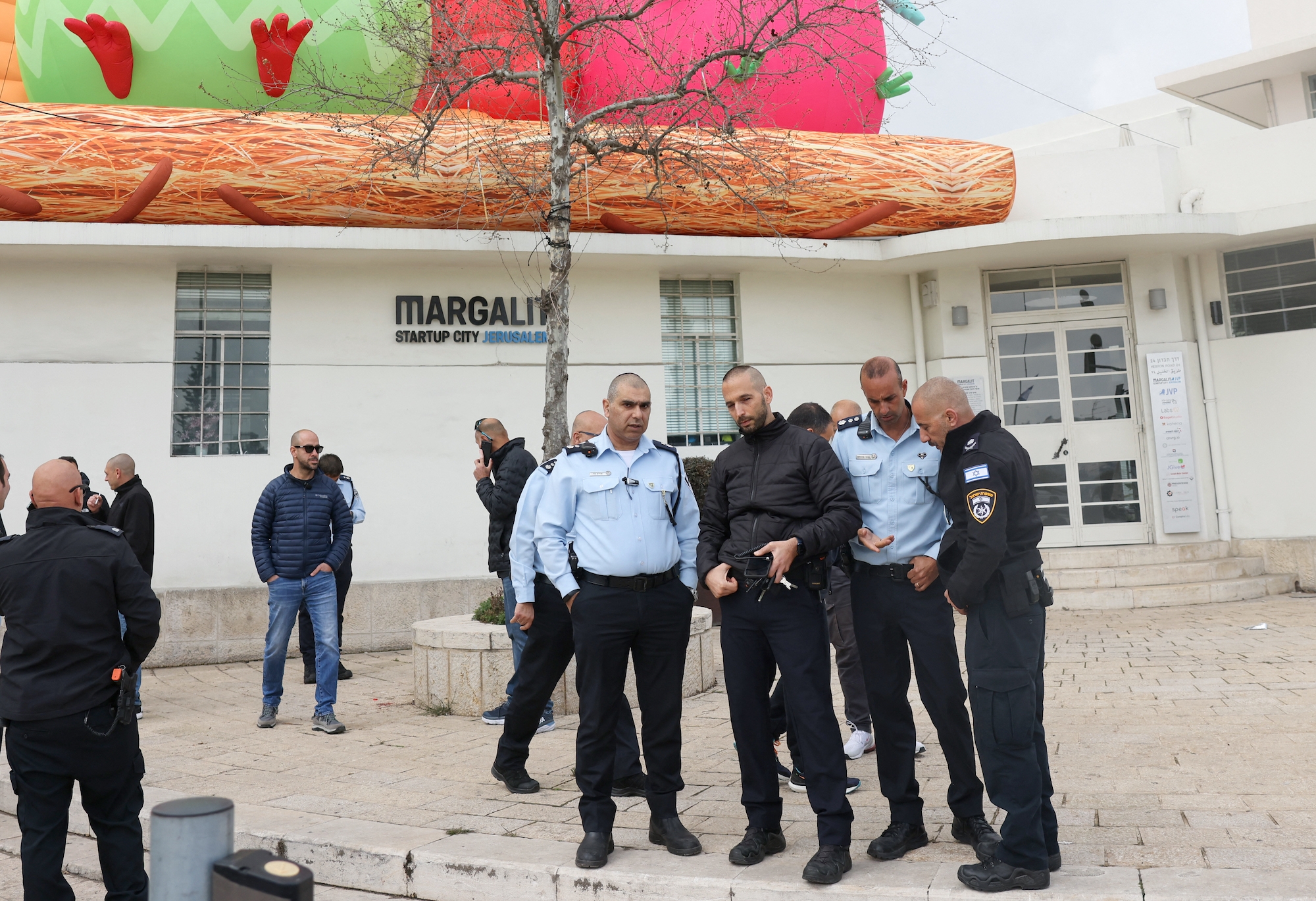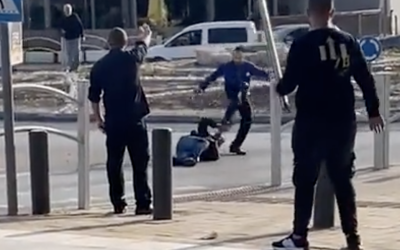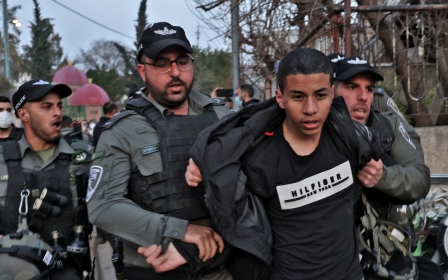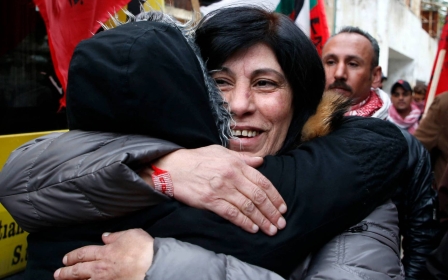Israeli court orders removal of 'unreasonable' restraints on unconscious Palestinian detainee

An Israeli judge has ordered police to remove restraints on an unconscious and intubated Palestinian detainee, calling the action unreasonable.
Murad Barakat was shot by Israeli police on Saturday after stabbing a man on Hebron Road in Jerusalem. The bullet pierced his abdomen and hit the spinal cord. He was taken to Shaare Zedek Medical Center and underwent complex surgery to treat his wounds.
'In a situation in which the petitioner is intubated and unconscious and constantly watched by two police officers, he does not constitute a danger that justifies restraining him'
- Judge Shirley Renner, Jerusalem District Court
Barakat, who was in an induced coma following his procedure, had both legs and one hand cuffed to the hospital bed by the police, despite doctors insisting he would not be able to move anytime soon and that the restraints could hinder his rehabilitation.
On Thursday, Judge Shirley Renner of the Jerusalem District Court ruled that the decision to restrain the detainee “exceeds the boundaries of reasonability”, Haaretz reported.
In ordering the restraints removed, the judge quoted the police procedure that requires determination of a prisoner’s level of danger.
She ruled that such a determination had not been made in the case of Barakat, and that “a decision to restrain a hospitalised detainee cannot be a general one.”
“In a situation in which the petitioner is intubated and unconscious and constantly watched by two police officers, he does not constitute a danger that justifies restraining him,” Renner said.
In the name of ‘security’
Rima Asadi, Barakat’s lawyer, had petitioned the District Court to have him released from restraints, citing his deteriorating health following surgery. The court initially declined her request and imposed a gag order that prevented the discussion of details of her appeal due to “classified security concerns”.
Asadi refuted the Israeli claim that Barakat posed a danger to himself and to the hospital staff, or that he posed a security risk, citing his inability to move, let alone to escape from the hospital.
Middle East Eye reached out to Asadi for comments, but due to the gag order, she declined to speak about the details of her court appeal.
However, Asadi told MEE that it is the Israeli Prisons Ordinance that permits police to restrain hospitalised prisoners while receiving treatment.
According to data collected by prisoners’ rights organisations, 94 percent of hospitalised prisoners and detainees are restrained during their treatment, usually with one hand and one foot cuffed to the hospital bed and under 24-hour surveillance, she said.
Appeal from the medical community
The manager of the intensive care unit at the hospital, Professor Alon Schwartz, also asked the Israeli police to remove Barakat’s handcuffs, warning that not doing so would put his life at risk and impede his treatment.
'The task of the guards is to guard the detainee, not to punish him... leave the punishment to the Courts'
- Tami Karni, Israel Medical Association Ethics Board
Schwartz’s letter to Israeli police stated: “Due to Barakat’s injury, his road to recovery will be long, and we still cannot expect how long his treatment will last and how long he will remain in the hospital.”
The ICU manager stressed that Barakat’s ability to move is an important part of improving his health and that keeping him in restraints poses a danger to his recovery and increases the likelihood of deep vein thrombosis, blood clots in the lungs, chafing injuries, and infection.
Barakat was also sedated and put on a ventilator, so he would not pose any real danger, stated Schwartz.
Tami Karni, chairperson of the Israel Medical Association’s Ethics Board, echoed the sentiment in a letter to Minister of Public Security Omer Bar-Lev, calling on him to intervene in Barakat’s case.
“The task of the guards is to guard the detainee, not to punish him,” Karni wrote, stressing the importance of “leaving the punishment for the Courts, which should mete it out after treatment.”
Intent to humiliate
The way Barakat has been treated is intended as a form of retribution and humiliation, according to Fuad Sultani, a lawyer with Adalah - The Legal Center for Arab Minority Rights.
Sultani believes that Barakat’s case reflects the conditions of hundreds of hospitalised Palestinians who have had to endure similar treatment in Israeli prisons. The number of hospitalised Palestinian prisoners is 600, including four cancer patients, he said.
Throughout his time representing prisoners at Israeli courts, Sultani said he had seen many cases in which prisoners were placed in restraints even when they were unconscious or paralysed.
The courts would simply rubber-stamp the request to restrain detainees in hospital submitted by the Israeli security services.
If the prisoners’ rights associations appealed to such measures, the courts would cite “security reasons and classified files”, which the lawyers had no access to, Sultani said.
Sultani believes such policy is designed to “humiliate and punish” detainees in hospitals, as many of them are immobile and pose no security threat to anyone, let alone to escape.
There have also been cases in which pregnant Palestinian prisoners were put in cuffs as they went into labour in hospital. They were even prevented from holding their newborn babies during their stay on the maternity ward, Sultani said.
Middle East Eye propose une couverture et une analyse indépendantes et incomparables du Moyen-Orient, de l’Afrique du Nord et d’autres régions du monde. Pour en savoir plus sur la reprise de ce contenu et les frais qui s’appliquent, veuillez remplir ce formulaire [en anglais]. Pour en savoir plus sur MEE, cliquez ici [en anglais].





